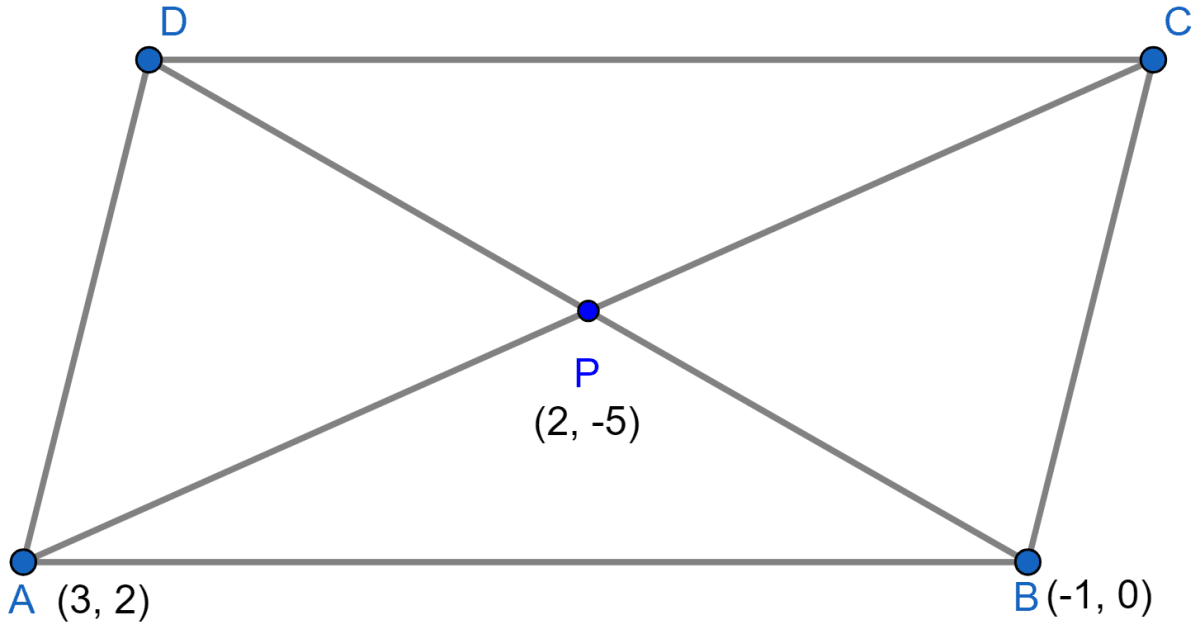Mathematics
If two vertices of a parallelogram are (3, 2), (-1, 0) and its diagonals meet at (2, -5), find the other two vertices of the parallelogram.
Section Formula
30 Likes
Answer
The mid-point of the line segment joining the points (3, 2) and (-1, 0) is = (1, 1) which is not the same as (2, -5), therefore, the given points cannot be the opposite vertices. Hence, these vertices are adjoining.
The below figure shows the parallelogram:

Let coordinates of C be (x, y) then by mid-point formula,
⇒ x + 3 = 4 and y + 2 = -10
⇒ x = 1 and y = -12.
∴ Coordinates of C are (1, -12).
Now finding coordinates of D, let D be (m, n). Applying mid-point formula we get,
⇒ m - 1 = 4 and n = -10
⇒ m = 5 and n = -10.
∴ Coordinates of D are (5, -10).
Hence, the coordinates of C are (1, -12) and D are (5, -10).
Answered By
18 Likes
Related Questions
Three consecutive vertices of a parallelogram ABCD are A(1, 2), B(1, 0) and C(4, 0). Find the fourth vertex D.
Find the coordinates of the vertices of the triangle, the middle points of whose sides are .
Find the third vertex of a triangle if its two vertices are (-1, 4) and (5, 2) and mid-point of one side is (0, 3).
If the points A(-2, -1), B(1, 0), C(p, 3) and D(1, q) form a parallelogram ABCD, find the values of p and q.